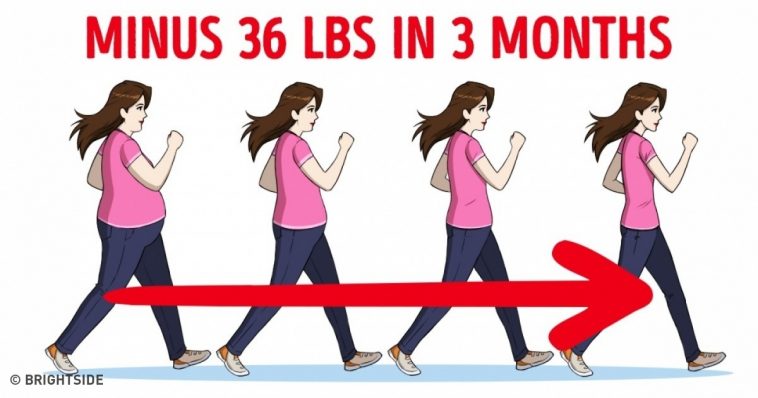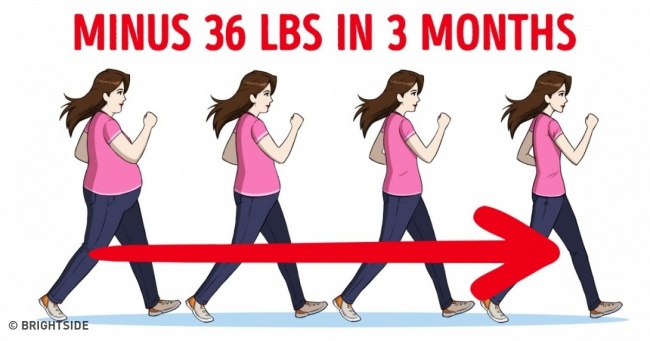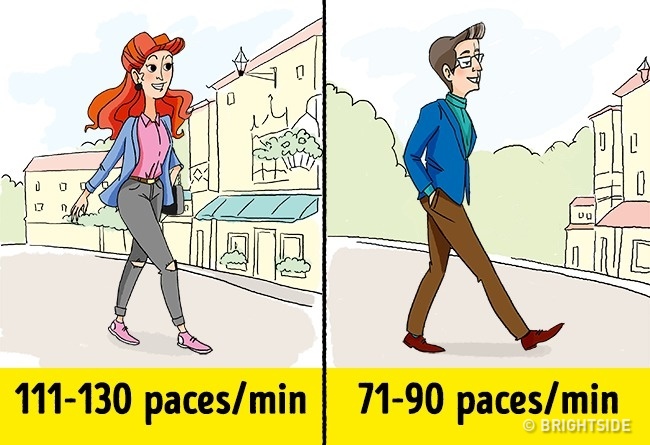How Much You Should Walk Every Day to Start Losing Weight
So many of us do sports, go to the gym, try different diets… And all this time we didn’t even realize that everyday lengthy walks, as shown by a number of studies, are no less effective against excess pounds.
FunnyModo found out which rules we should observe for walking to replace a whole set of exercises.
The main factors affecting the calories burned when walking are the distance covered, your speed, and your body weight. For best results, you should follow a regular schedule and use a pace counter.
You can also start with a healthier diet plan from Keto Balanced help you loose weight but increase your energy, so you will feel great when going to walk and you will start loosing weight in a healthy way.
This device will tell you how much you’ve walked during the day. If you cover a big distance but still don’t lose weight, it can count how many paces you should add.
This approximate estimation will help you make your own schedule (note that a lot depends on your individual characteristics, lifestyle, food habits, and health condition):
100 kcal = 2,000 paces = 1.6 km
1 kg = 140,000 paces = 7,000 kcal = 112 km
Ways to prolong your walks:
- Try not driving or taking a bus.
- Take your kids to and from school.
- Stop using elevators and escalators.
- Walk your dog for longer.To make your walks more interesting, try the following:
- Take a friend along.
- Listen to your favorite music or audiobook.
- Walk around unfamiliar places, and choose new routes.
In winter, you can continue practicing at home if you have a treadmill. It will let you watch movies or TV shows while keeping you in shape.
Keep in mind that your paces are uneven and can vary from a foot to a yard. To count your pace length, measure a distance of 10 to 20 meters, and cover it at your usual pace while counting steps. Divide the distance in centimeters (1,000 or 2,000) by the number of steps you’ve made.
- Less than 70 paces/min
For a healthy person, such a pace has next to no training effect. It’s recommended for people recovering from a heart attack or suffering from severe angina. - 71-90 paces/min, 3-4 km/h
Recommended for people with cardiovascular diseases. - 91-110 paces/min, 4-5 km/h
A good load for your body that’s suitable for any healthy person. - 111-130 paces/min
A great exercise for your body, but even healthy people have difficulty maintaining such a pace for a long time.
- Start with a light load, gradually increasing the duration and pace. You should raise the length of your walks first, and only then increase the tempo. The loads should be adequate for your health.
- Practice walking regularly. One walk a week won’t do you any good. If you can’t take walks every day, then do it at least 2-3 times a week. It can be done at any convenient time but no earlier than 1-1.5 hours after a meal.
- Consult your physician, and undergo a medical checkup. Repeat 1-2 times a year.
- Watch your posture while walking. Your torso and shoulders should be straight and your stomach sucked in.
You should also remember that a slow walk over a short distance will be useless, while if you walk too fast and for too long being unprepared, you may even cause harm to yourself.
Illustrated by Anna Syrovatkina, Marat Nugumanov for BrightSide.me












Comments